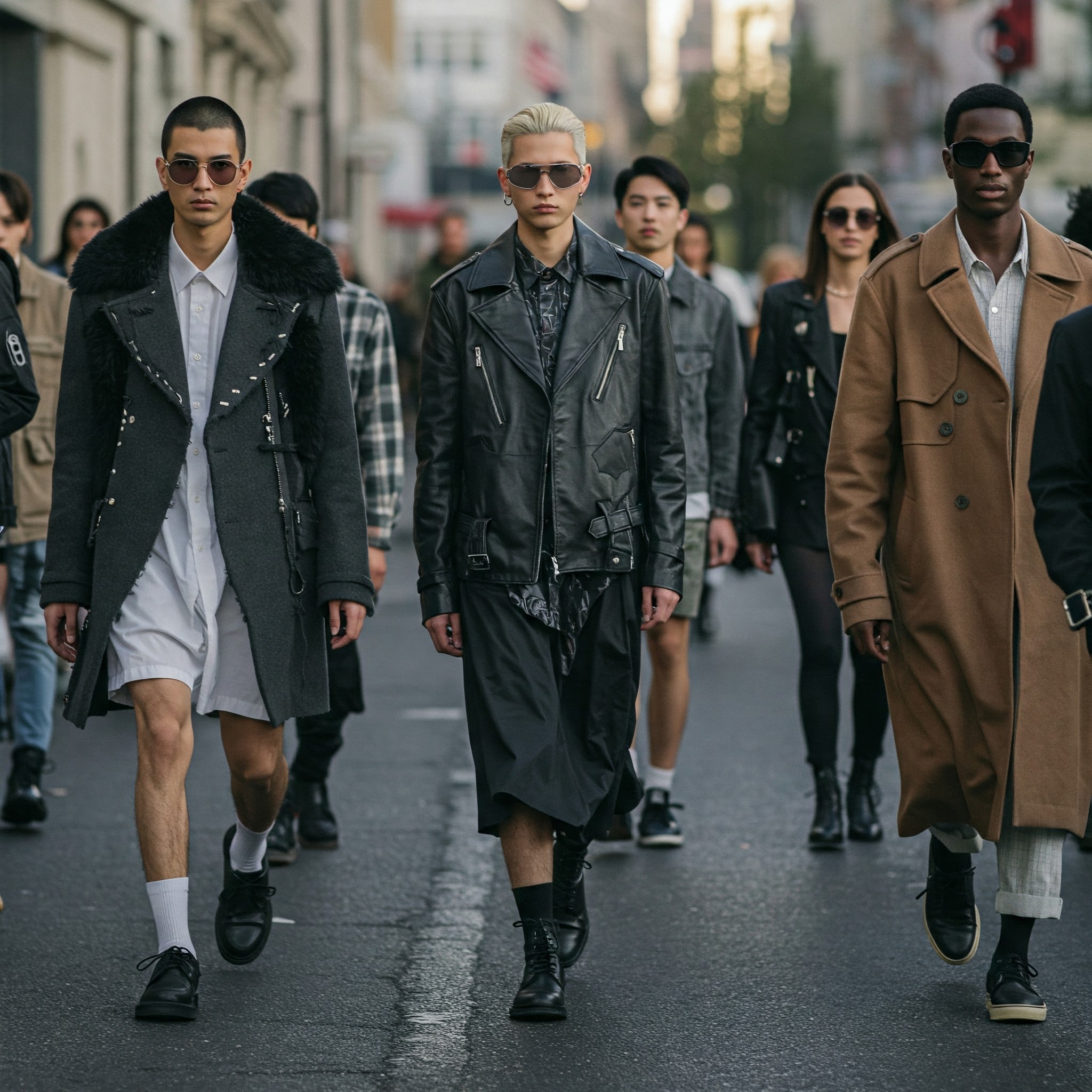Fashion, at its core, transcends mere clothing. It is a potent form of self-expression, a visual language that communicates identity, culture, and even rebellion. In the 21st century, the landscape of fashion has undergone a seismic shift, propelled by technological advancements, evolving social values, and a heightened awareness of global interconnectedness. This essay will delve into the multifaceted nature of contemporary fashion, exploring its key trends, its intricate relationship with sustainability, technology, and identity, and its enduring power as a cultural force.
One of the defining characteristics of modern fashion is its democratization. The rise of fast fashion, fueled by the internet and social media, has made trends more accessible than ever before. Consumers can instantly discover and emulate styles seen on runways and influencers, leading to a rapid turnover of trends and a blurring of traditional high-low fashion boundaries. While this accessibility has its advantages, offering a wider range of styles at various price points, it also raises concerns about overconsumption and the environmental impact of disposable clothing.
In response to these concerns, sustainability has emerged as a critical and increasingly influential movement within the fashion industry. Consumers are demanding greater transparency and ethical practices from brands, prompting a shift towards conscious consumption. Designers and manufacturers are exploring innovative solutions such as using recycled and upcycled materials, developing circular production models, and reducing waste throughout the supply chain. The focus is shifting from quantity to quality, with a growing appreciation for durable, timeless pieces that minimize environmental impact. This conscious consumerism is not just a trend; it represents a fundamental change in values, recognizing the environmental and social responsibility inherent in the clothes we wear.
Technology is another transformative force reshaping the fashion landscape. From 3D printing and virtual try-on experiences to AI-powered styling recommendations and the rise of the metaverse, technology is revolutionizing how clothes are designed, produced, marketed, and consumed. Virtual fashion and digital avatars are blurring the lines between the physical and digital realms, opening up new avenues for self-expression and identity exploration. Social media platforms have become powerful catalysts for trend dissemination and brand building, empowering influencers and creating direct-to-consumer models that bypass traditional retail structures. The integration of technology is not just about innovation; it’s about creating a more personalized, efficient, and potentially more sustainable fashion ecosystem.
The concept of identity remains central to the function of fashion. In an increasingly diverse and fluid society, individuals are using clothing to express their unique personalities, cultural affiliations, and evolving identities. Traditional gender norms are being challenged, leading to a rise in gender-neutral and fluid fashion. Cultural appropriation is a significant point of discussion, highlighting the importance of respecting and understanding the origins and significance of different sartorial traditions. Fashion, therefore, becomes a powerful tool for both individual assertion and collective belonging, reflecting the complex tapestry of human experience.
Furthermore, the globalization of fashion continues to shape its trajectory. Designers draw inspiration from diverse cultures and aesthetics, leading to a rich cross-pollination of styles. The interconnectedness of the world through digital platforms allows for a rapid exchange of ideas and trends across geographical boundaries. However, this globalization also necessitates a critical examination of ethical sourcing and fair labor practices within the global supply chain. The demand for transparency and accountability from fashion brands regarding their production processes is growing, reflecting a greater awareness of the social implications of our clothing choices.
The role of the designer is also evolving. While creativity and aesthetic vision remain paramount, contemporary designers are increasingly expected to be innovators, problem-solvers, and advocates for sustainability and ethical practices. They are tasked with balancing artistic expression with social responsibility, exploring new materials and technologies, and engaging with consumers in meaningful ways. The designer of the 21st century is not just a creator of garments; they are a curator of culture and a potential agent for positive change.
Looking ahead, the future of fashion promises to be even more dynamic and transformative. We can anticipate further integration of technology, a deeper commitment to sustainability, and a continued emphasis on individual expression and inclusivity. The metaverse may offer new frontiers for fashion consumption and identity creation, while advancements in materials science could lead to more sustainable and functional clothing. The conversation surrounding fashion will likely continue to evolve, encompassing not just aesthetics but also ethics, technology, and its profound impact on the world around us.
In conclusion, fashion in the 21st century is a complex and multifaceted phenomenon. It is a powerful form of communication, a reflection of cultural values, and an industry undergoing significant transformation. The interplay of democratization, sustainability, technology, and identity is shaping its current trajectory and will continue to define its future. As consumers become more informed and demand more from the brands they support, the fashion industry has the potential to evolve into a more responsible, innovative, and ultimately more meaningful force in our lives. The ever-evolving tapestry of fashion reflects the dynamism of our times, constantly adapting and reflecting the complexities of the human experience.

